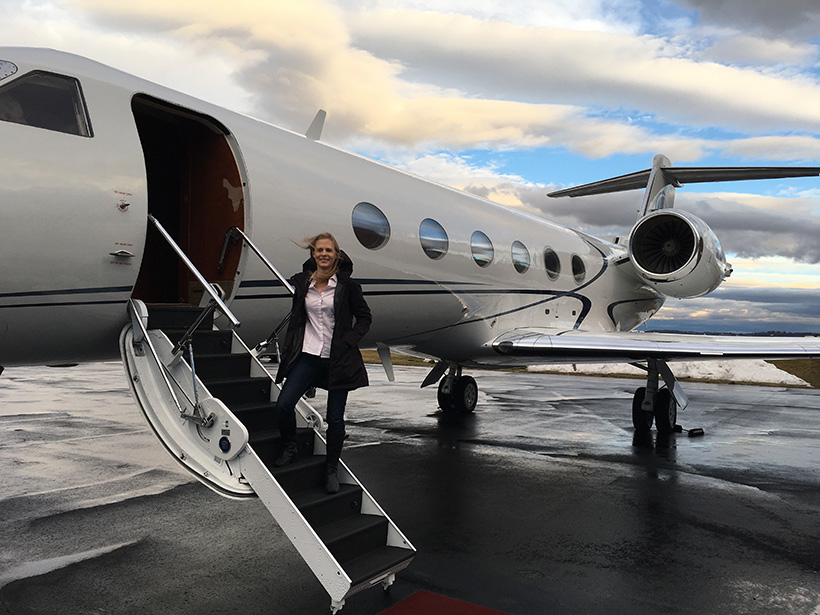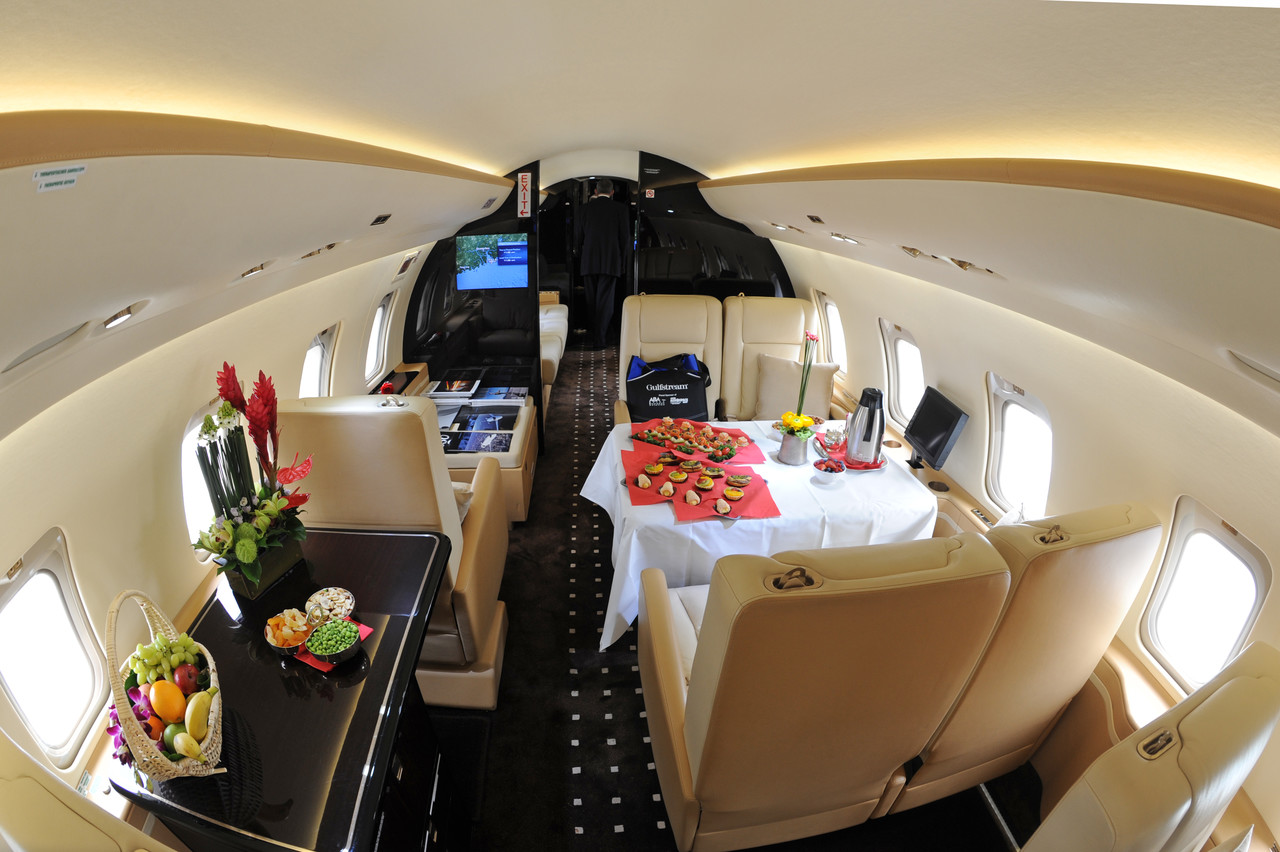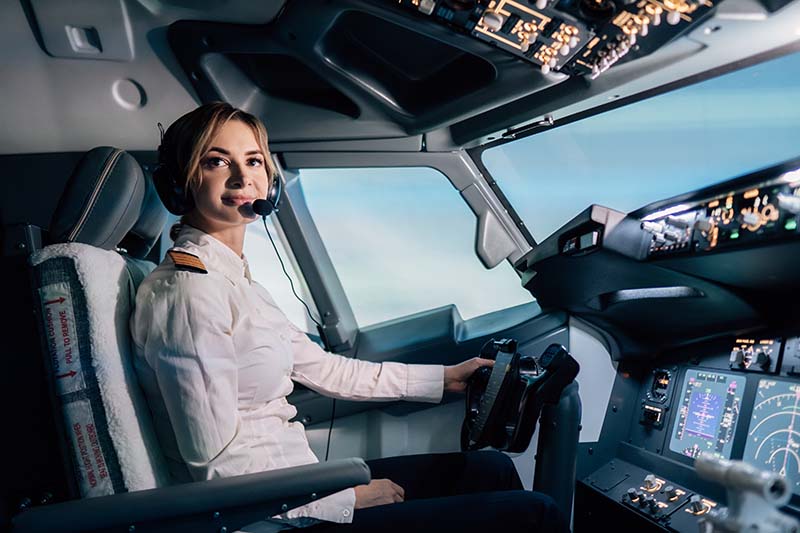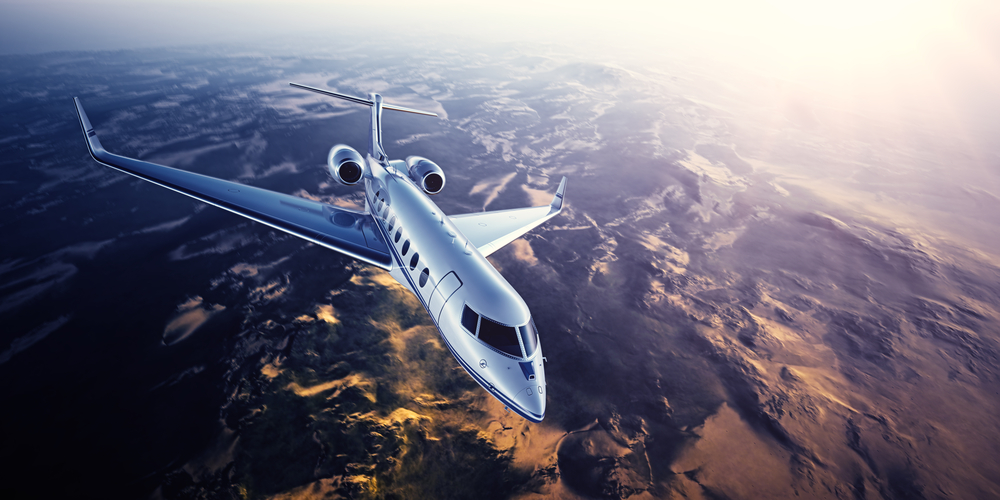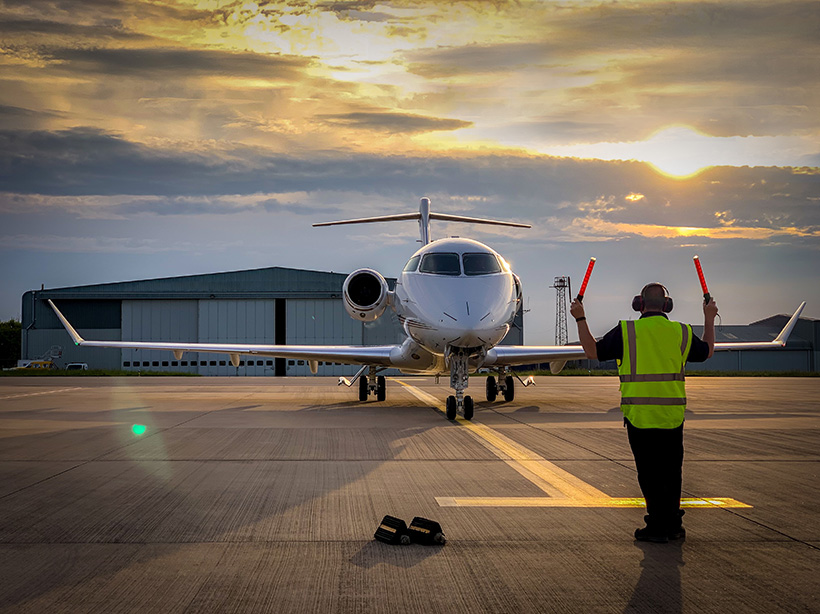Introducing Madeleine "Maddy" Gilad, a pioneering force in aviation.
With over two decades of experience, Maddy has not only navigated the skies but also reshaped the industry's landscape. From piloting a diverse range of aircraft, including A320s, Dorneir 328s, GIVs, and Piaggio’s, to her instrumental role in ProJet Aviation's global expansion, her contributions have been nothing short of extraordinary. Beyond her cockpit achievements, Maddy's dedication to fostering inclusivity and diversity stands out.
Her journey reflects the challenges and triumphs of a female aviator striving to break barriers. Maddy's partnership with Shye Gilad, co-founder of ProJet Aviation, epitomizes the collaborative spirit driving change in aviation. Their shared commitment to supporting fellow aviators underscores the importance of community and mentorship in nurturing talent.
As Maddy continues to inspire and empower, her impact resonates across generations, shaping the future of aviation. "A series of luck, opportunity, and hard work!" — this mantra encapsulates Maddy's remarkable journey. It is both an honor and a privilege to have the opportunity to interview Maddy.
Richard Zaher: How did you decide to pursue a career as a commercial pilot, and what motivated you to enter this field?
Madeleine Gilad: This is the long answer… I took my first flight lesson on my 16th birthday. I had, as long as I could remember, been interested in airplanes. So, my dad set my first lesson at one of the local flight schools in San Carlos (KSQL), CA. I flew from KSQL out to Oakdale (027), CA. It would usually take us 2 + hours to drive out there. It took 30 minutes to fly!! So, I flew out in the morning, met my friends to go waterskiing at Lake Tulloch, and decided I needed to get a pilot’s license! I did not know yet that I would be doing this for a career, or even that I could do this as a career.
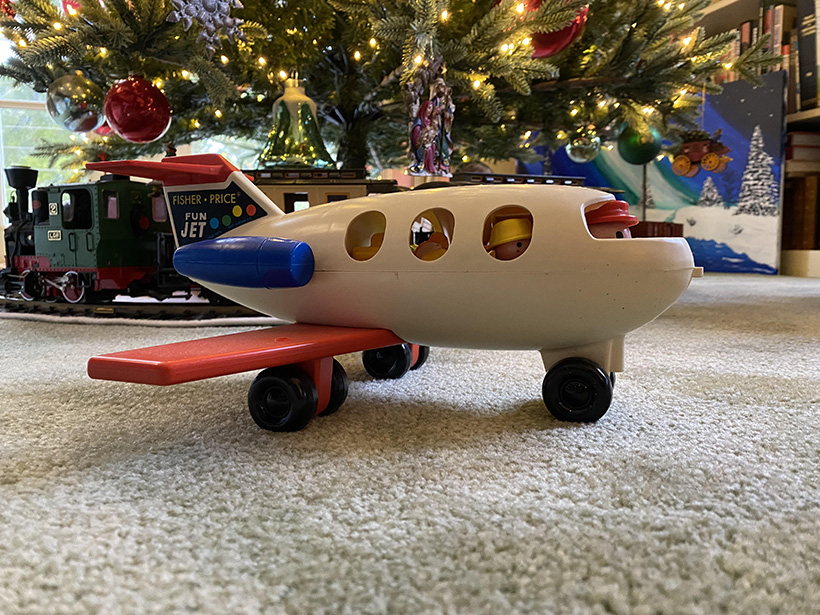 Maddy's First Airplane
Maddy's First Airplane
So, this next part took some time. I started at one flight school. They seemed to never have instructors available. Then I moved to another flight school. They seemed to have their aircraft in maintenance all the time. Then I moved to my Goldilocks flight school. They had new Diamond Aircraft and a list of instructors. The owner of the flight school, Karen Morss, was always a big supporter of women in aviation. She encouraged me, pushed me, and introduced me to people and opportunities that helped get me to where I am today.
I finished up my private pilot license while I was in high school. It was now 1996, my senior year of high school, and I was trying to figure out what I was going to do next. Karen had introduced me to an airline pilot who told me I could become a pilot for my career and that there are universities where you can study aviation. I immediately thought, “Me?”. Well, ok, let's do some research. So, I googled it. Just kidding, google was not launched for another 2 years. However, I learned about and applied to a couple of aviation programs. My first choice was Embry-Riddle Aeronautical University in Daytona Beach. I was taking classes like physics, aerodynamics, aviation weather, global navigation, and flight physiology and enjoying every moment. While I was in school, I did an internship with American Airlines in San Francisco. I was working in the flight office and learning about what goes on behind the scenes to support the operation. I thought I would be working for American in San Francisco after I graduated from college. I took an extra class every other semester so by December of 2000 I was all done with my required courses and only needed 3 more elective credits. I was able to do this with an internship with Atlantic Coast Airlines ACA in Dulles, Virginia. I got an interview when that was complete and my first airline job from there! That was back before the rules changed and you only needed a commercial pilot certificate and 250 hours of flight time. There I was, an 800-hour pilot, flying a Dornier D328 jet!
The short answer is my Dad, that first magical flight, and Karen Morss.
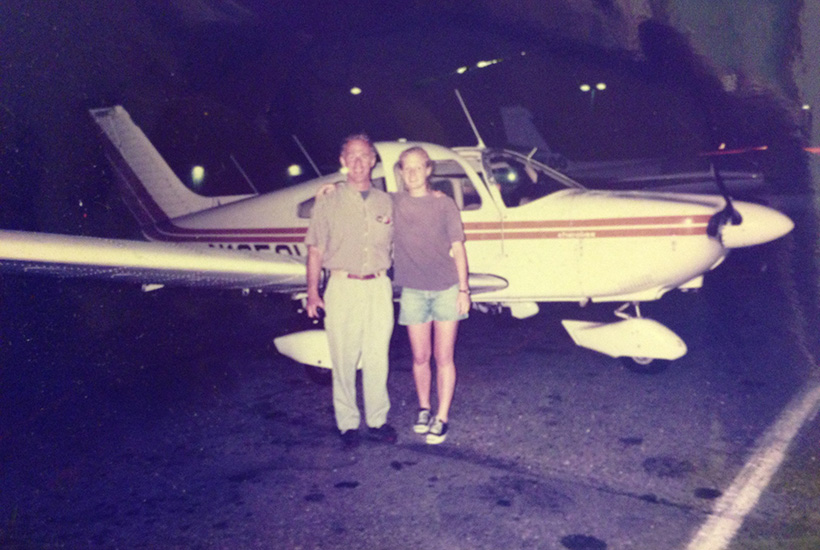 Madeleine and her dad in Burbank, CA KBUR 1996
Madeleine and her dad in Burbank, CA KBUR 1996
Many of my girlfriends also became interested in aviation at a young age. We all ended up at Embry-Riddle in the late 90s and then Atlantic Coast Airlines in Virginia in the early 2000s.
- Carly grew up close to the real Top Gun school in Southern California and attributes that to her inspiration to becoming a pilot.
- Inga’s dad was a TWA pilot and was very supportive and encouraging of her career.
- Sarah’s love of travel is what motivated her for a career in aviation but is was looking at colleges and stopping at a friend’s house in South Carolina who happened to be a pilot and gave her a private pilot book that she studied on the rest of the trip.
- April loved to travel and knew before the rest of us that being a pilot was going to be her career of choice.
- I met Meredith on our first day at Embry-Riddle. We were roommates freshman year. She knew when she took her first discovery ride on her 17th birthday and the instructor mentioned to her she could have a career in aviation. She told me on the first day we met that she would be flying at FedEx. She is a pilot on the Boeing 767 now.
 Madeleine Gilad (United), Inga Brock (Delta), April Abenza (JetBlue), Meredith Ducommun (FedEx), Carly Oden (Delta), and Sarah Gilmore (Southwest)
Madeleine Gilad (United), Inga Brock (Delta), April Abenza (JetBlue), Meredith Ducommun (FedEx), Carly Oden (Delta), and Sarah Gilmore (Southwest)
RZ: Can you share some details about your training process to become a commercial pilot? Were there any specific challenges you faced?
MG: I was doing this training in the late 90s. Started at Embry-Riddle in the fall of 1997. They were so busy flight instructing that I was not assigned an instructor to get my instrument rating until January of 1998. So, I got my instrument rating that spring in Florida. I went back to California in the summer of 1998 and decided to get my multi-engine and commercial certificate at Diamond Aviation in KSQL. Karen always had plenty of instructors available and well-maintained aircraft. I worked part-time at Diamond Aviation that summer and then worked part-time at Wells Fargo Bank. Working at the airport gave me an opportunity to meet a lot of other aviators with various backgrounds and goals. I was able to schedule lessons before or after work so that saved time commuting to lessons and work. Working at the airport also gave me a discount on the hourly rate of the aircraft. In addition to finding a reliable flight school financing your flight training can be a challenging part. I feel very fortunate that I had supportive and enthusiastic parents while I was doing my flight training. Working at the bank let me learn about other career opportunities, make a little more money, and helped me understand that a desk job did not quite fit what I was looking for.
Many of my pilot friends, as well as myself, were hired in 2001. I was hired at my first regional airline, Atlantic Coast Airlines (ACA) in June of 2001. This was an amazing time. The airlines were hiring, salaries were increasing, and my hard work looked like it was about to pay off. And then I was still in training on September 11, 2001. The hiring stopped and many airlines were furloughing. The whole industry and country changed overnight. We were lucky at the time not to lose our jobs, but the growth and the movement had stopped. Our airline survived for four more years and then I was furloughed on February 14, 2005. That brought challenges and opportunities.
 Madeleine Gilad in KBUR in 2017 with United Airlines
Madeleine Gilad in KBUR in 2017 with United Airlines
RZ: In your opinion, how has the aviation industry evolved in terms of gender diversity since you started your career as a pilot?
MG: It feels like the aviation industry is starting to evolve in terms of gender diversity. But when you look at the numbers in the last 28 years since I started flying it has only increased by about 1%. Worldwide, as well as in the United States, we have just over 5% female pilots. The total number of female pilots is increasing but so is the total number of all pilots and the percentage has only slightly increased.
Recent initiatives and leadership roles held by women signify a positive shift, albeit with much progress still to be made. In the last decade, we have seen an increase in women holding leadership roles as chief pilots, system chief pilots, COOs, and CEOs.
 Sarah Gilmore, April Abenza, Madeleine Gilad 2002 KIAD Atlantic Coast Airlines ACA
Sarah Gilmore, April Abenza, Madeleine Gilad 2002 KIAD Atlantic Coast Airlines ACA
RZ: What unique opportunities or challenges have you encountered as a female commercial pilot?
MG: I have had numerous amazing opportunities as a commercial pilot. And several of them I have got to share with other female aviators.
A few of my highlights when I think about some of the cool opportunities, I have had…
- Planned and flew a flight from Virginia to Fiji. We stayed in Fiji for 8 days. One of my girlfriends who is a pilot for FedEx met me in Fiji and we got scuba certified in Fiji!
- Flew a trip to Paris for a long weekend. One of my girlfriends who is a captain at JetBlue met me over there and we toured around Paris museums and restaurants for a few days.
- Flew a trip and spent 8 days in the Galapagos Islands. Fascinating to explore where Darwin explored and studied evolution.
- Flew a trip to Kigali, Rwanda, and was able to go on a hike in the Congo to see the silverback gorillas
- Flew a trip to Kilimanjaro, Tanzania, and was able to go on a safari for a day to see many of the African wildlife
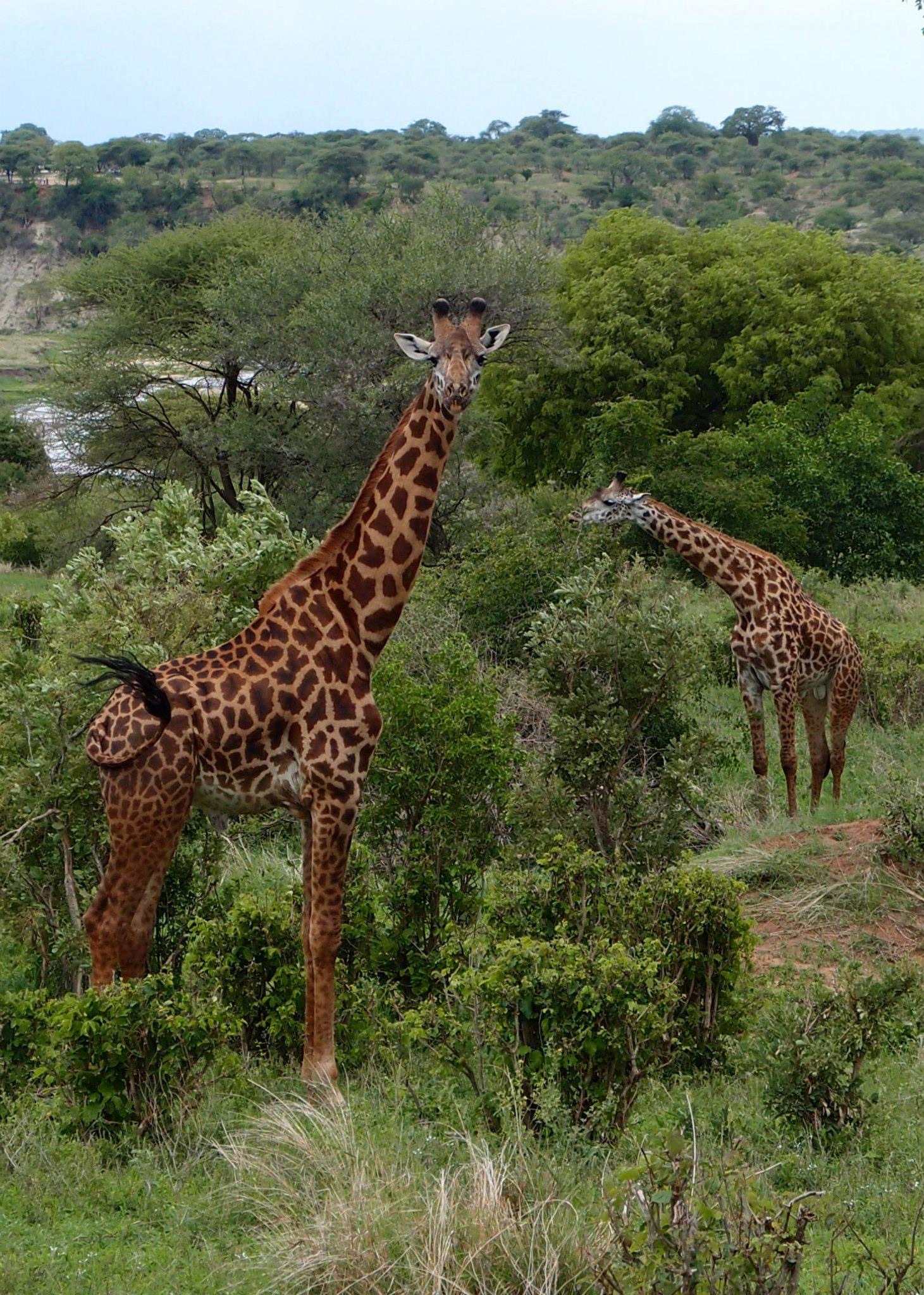 Tanzania 2012 - While we were there we were able to go on a safari.
Tanzania 2012 - While we were there we were able to go on a safari.
I guess one of the challenges as a female, especially when you are a captain, is that many people who interact with the crew will talk to anyone else (usually the male pilot you are flying with) because they assume you are not the one who can make a decision.
Over the years I have had my share of slighted comments. I do feel like this has decreased quite a bit in the last 5-10 years but we still have a way to go. Here are some of the comments that stuck with me and I wish I had a wittier, faster comment back to them..
- "Your husband must be skinny since you are not at home to cook for him?" – an examiner at the beginning of a check ride for a new type rating
- "Are you capable of flying this aircraft? I mean I don’t think women should be firefighters, police officers, or pilots." – a female passenger in New York
- "The problem with this company is all the women and minorities that they hire." – a male coworker
- "Do you want to stop at the duty-free shop? There is no way my wife or daughter could walk by a shop without stopping." – a male coworker
My friends and I discuss how thankful we are for the opportunity to create a great community. It may be small but very supportive. And in terms of challenges as a female, raising kids while also pursuing a career has its challenges. They talk about overcoming this in many ways…stay at home dad, nanny, family (grandparent’s support)
RZ: Are there any stereotypes or misconceptions about female pilots that you've had to confront, and how do you address them?
MG: Yes. I can’t count the number of times that people have suggested that you only got the job because you are female or would say that female pilots are drama or that you might not be as capable as a man.
One example… I was flying a charter out of Teterboro (KTEB) to one of the BVI airports. I went in to greet the passengers, check their IDs, and give them a quick brief about the flight. Then I went to load their luggage while they boarded the flight. As they were boarding the other pilot and the cabin attendant were greeting them. One of the ladies asked where the captain was. The crew told her I was in the back loading their luggage. Then she proceeded to ask “But where is the man?” We had an all-female crew and this woman was white-knuckled all the way until landing according to our cabin attendant. We had an uneventful flight and an extra smooth landing. She finally relaxed and thanked us for the flight and said she looked forward to the flight home.
So, we like to say to just show up, do your job at 100% and we can change minds one flight at a time. People will see that we are equally capable.
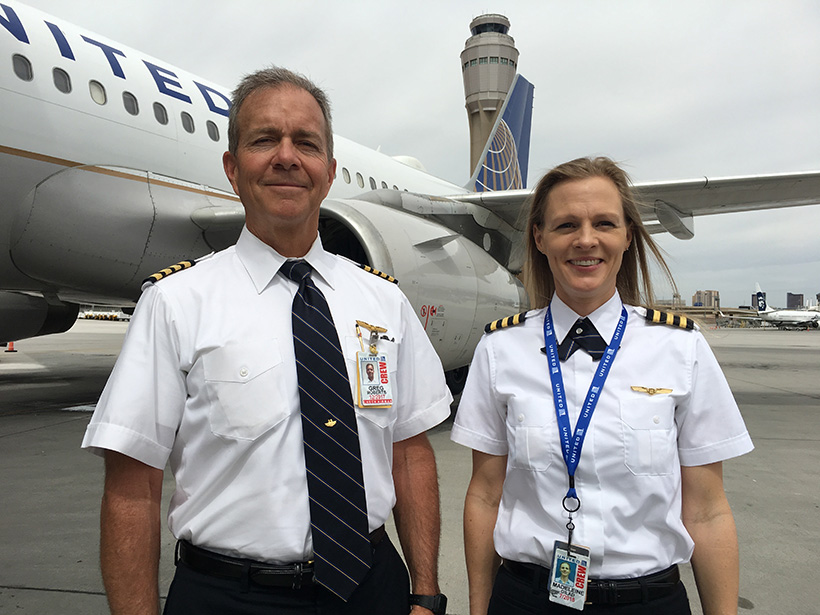 Greg Roberts and Madeleine Gilad at KLAS in 2017 after completing my initial operating experience on the A320
Greg Roberts and Madeleine Gilad at KLAS in 2017 after completing my initial operating experience on the A320
RZ: Can you describe a memorable experience or accomplishment in your career that stands out to you?
MG: There are many memorable experiences…Getting that 1st job at ACA, getting furloughed on Valentine’s Day, the 1st captain upgrade at my 1st charter company, starting our own charter management company, expanding that to worldwide operations with the FAA proving runs, and getting hired at a major airline.
So getting the FAA approval for worldwide operations and expanding our certificate to operations that could carry 10 or more passengers at ProJet was one of the more unique memorable experiences. We prepared for months. The team consisted of maintenance, scheduling/dispatch, flight operations, and safety/security. Our team developed procedures, manuals, and training to show we could operate around the world. We flew with the FAA for 25 hours around the US and across the North Atlantic to Ireland. We ran numerous scenarios to prove we could operate according to our policies. We dealt with everything from medical emergencies to maintenance issues to security issues. It was a long 25 hours over 4 days but, in the end, we got the approval and that was the start of many flights to Europe, Africa, Asia, and South America. This was a big deal. At the time there were around 2000 charter operators in the US and only about 10% with worldwide ops authority.
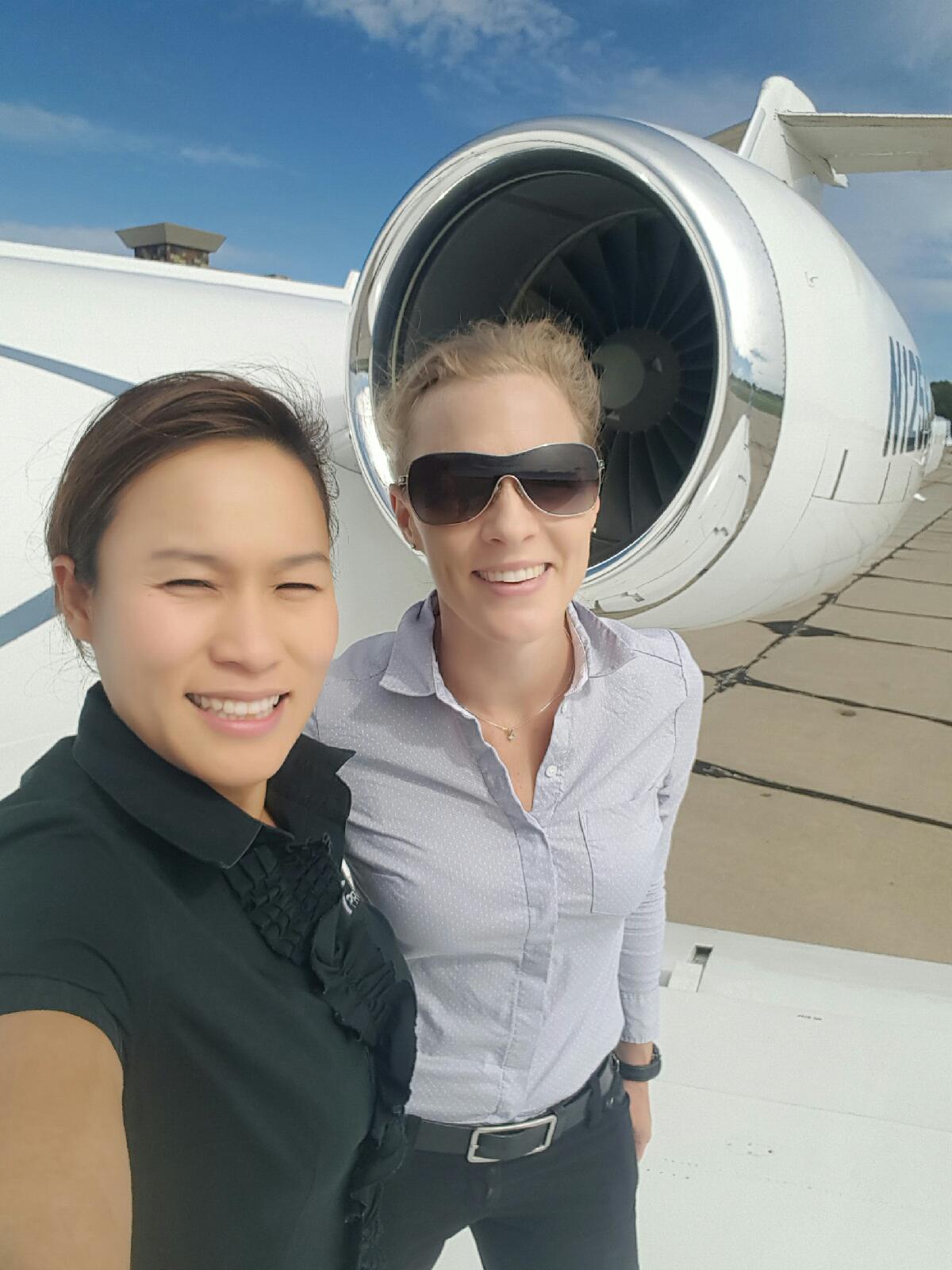 Nikki Wongvongsri and Madeleine Gilad in KCLE with a GIV on a charter trip in 2015
Nikki Wongvongsri and Madeleine Gilad in KCLE with a GIV on a charter trip in 2015
RZ: Have you faced any gender-related obstacles or biases in your career, and how did you overcome them?
MG: I have had companies say that women get paid x while men get paid y for doing the same job. Also sent an application to a company that did not respond but some friends who worked there were told “We won’t hire women”. So, I joined a company with a union where everyone gets paid the same for the same work.
It makes it a lot easier to adapt and overcome these obstacles is you have a good support network!
Especially a supportive spouse!
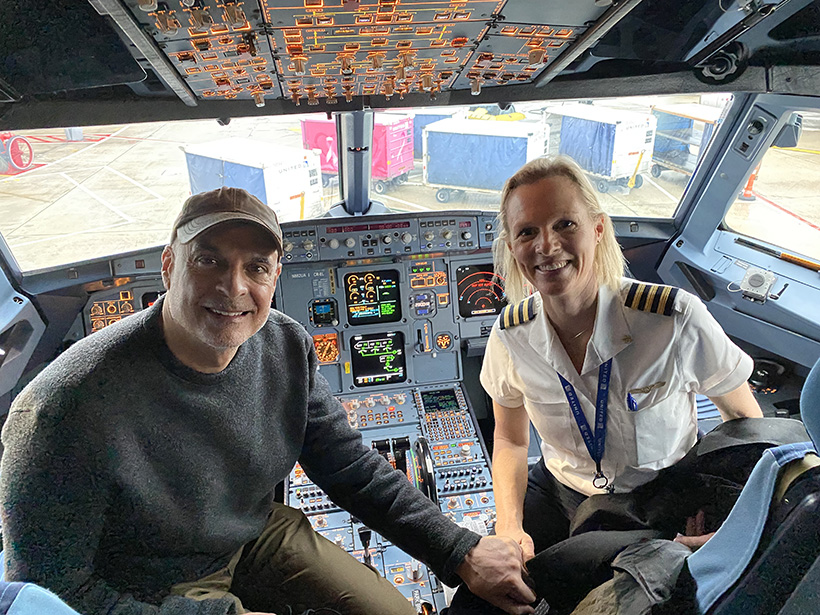 Shye Gilad and Madeleine Gilad 2022
Shye Gilad and Madeleine Gilad 2022
RZ: How do you think the industry can encourage more women to pursue careers as commercial pilots?
MG: Visibility! Exposure! Mentoring! Going to career days, visiting classrooms, and talking with them about all that is involved in a pilot's career might spark a sense of wonder and excitement.
And I hate to say it, but social media can give more exposure to the next generation.
And just showing up to work and interacting and encouraging the kids you meet.
There are a few organizations that are really trying to expose the next generation to the possibility of being a pilot as an option for a career choice. Women in Aviation International is one of those organizations. Julie O’Brien’s Aviation Education Expo is another excellent example of what we can do to expose more young people, including women to aviation. United Airlines Aviate Academy is actively trying to recruit more women and minorities to its program. And people like you Richard, who are doing interviews like this, giving scholarships for pilot training, and attending career expos to show different options in the world of aviation.
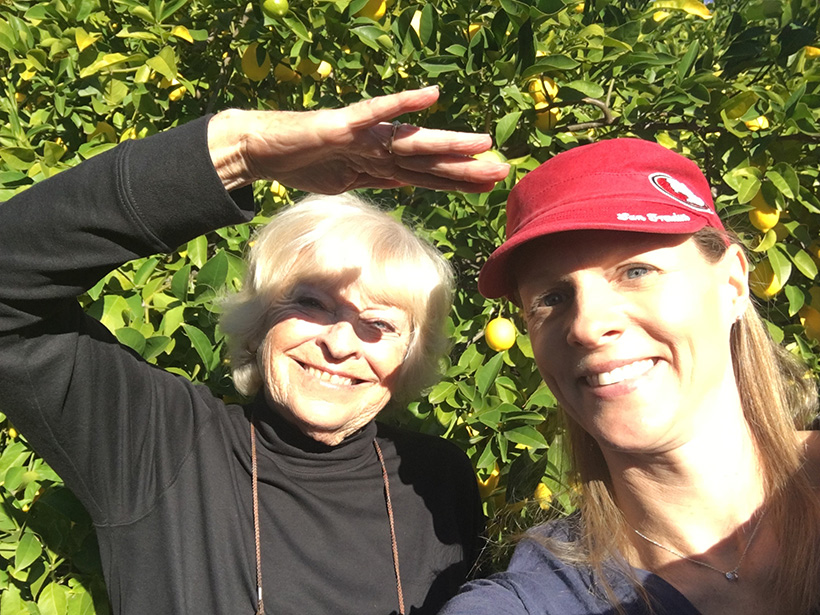 Karen Morss and Madeleine Gilad in 2017 at Karen’s lemon orchard near KSFO
Karen Morss and Madeleine Gilad in 2017 at Karen’s lemon orchard near KSFO
RZ: What advice would you give to young women aspiring to become commercial pilots?
MG: Always keep learning! When you are in school embrace all your subjects. I really loved math and science.
But history, geography, and language arts are just as important. A career as a pilot is so much more than flying airplanes. It’s about exploring new places and cultures.
Find a mentor and friends to help support and celebrate with you along the way. Once you make it, do the same for the next generation.
Apply for scholarships! Flight training today costs about 100K to get your ratings. You can offset so much of this by writing a few essays.
